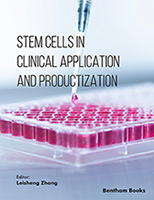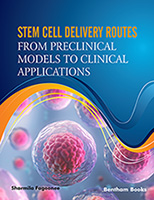"Dream, then think, act, and pray."
Professor YAMAMURA
The proposed book will enrich the previous publications regarding stem cell, by promoting information in two research/clinical renewable areas, such as regeneration and tumorigenesis. Recent information gathered both from research and clinical application proved stem cell to have a “Janus face” characteristics, on one hand exploited for beneficial regeneration processes and source of uncontrolled tumoral proliferation, on the other. Therefore, these cells while used in experimental regeneration they can induce unwanted tumorigenesis pathways.
In this respect, signal transduction, stem cell markers, immune-related processes, “omics” technologies as up-dated identification, as well as pharmacological trends will emphasize the relationship between research and clinical behaviour of this controversy.
This book is emerging from the need to create a clear image regarding the complex mechanisms governing the involvement of stem cell in both regeneration and tumorigenesis.
The giants of cellular biology, have shown that the reawakening of pluripotency inherent in all cells have challenged forever our notions of cellular identity. The implications of the new reprogramming paradigm in biomedicine is steadily enhancing our understanding of cell differentiation and prospects for cellular therapies and in vivo regeneration.
The multi-authored book that we propose focuses specifically on various approaches in terms of organ and specific pathways that trigger the two opposite ways that a stem cell can follow. By definition, a stem cell has both self-renewal and multi-potentiality abilities. For this unique dual capacity, stem cells interpret signalling pathways in specialized ways. Adult stem cell for the treatment of damaged or diseased tissues relies on the ability of stem cells to produce paracrine factors that have a trophic effect on existing tissue cells, improving their functional capacity and develops the complex process of regeneration. On the other side of the barricade, the notion of cancer stem cells gained prominence in recent years but whether they are only the initiators and/or perpetuator of neoplasia, is still a matter of intense debate. Local factors from the microenvironment (niche) can sustain the self-renewal potential and possibly guide towards multiple stem cell populations.
The chapters will follow the balance between regeneration and tumorigenesis focusing several tissue and systems types: neuro-, haemato-, oro-, dermato-, digestive, endocrine domain. Chapters that focus on the immune processes that regulate and control the stem cell duality and state of the art identification omics technologies and pharmacological approaches. This viewpoint will have as central pillar the stem cell and its capacity to be main target for solving system medicine issues.
This e-book begins with the chapter elaborated by Chen et al. showing that the discovery of hematopoietic stem cells (HSCs) ushered in a new era in stem cell and life science research. The therapeutic benefits of HSCs have long been recognized; as bone marrow transplants have saved many lives, and with an increasing understanding of HSC biology and its translation to the clinic, studies of HSCs will continue benefit the health of humans and our curiosity of life in general.
The chapter elaborated by Slootweg and Zurac focuses on the epithelial stem cells in oral mucosa. Normal epithelial stem cells are characterized, their location, methods of identification and stemness markers are presented. The concept of cancer stem cells in oral cancer, their origin and markers are discussed along with cancer stem cells niche and the interference with treatment. The chapter discuss the role of oral stem cells in oral mucosa wound repair.
The chapter dedicated to skin stem cells elaborated by Caruntu et al. highlights the main characteristics of processes like regeneration and tumorigenesis in skin. The chapter describes the skin regeneration pathways and it elaborates on an interesting link regarding regeneration triggering tumorigenesis in cutaneous tissue. Stem cells that can trigger non-melanoma and melanoma skin cancers are described in separate sections.
The chapter focusing on adult pituitary stem cells elaborated by Gheorghișan-Galateanu shows the recent reports of potential populations of stem cells in the pituitary. The nature of pituitary stem cells remains a matter of debate. The variety of markers and approaches used to identify pituitary progenitors and stem cells makes it difficult to compare results and integrate the findings.
There are two chapters that focus on stem cells in brain. One chapter elaborated by Enciu shows the neuroregeneration of mammalian brain, where a functional stem cell niche and proper molecular cues is needed. Neural stem cells have been initially considered, as a putative source for lost neurons, but in terms of cognitive rescue, the results have been disappointing. The chapter discusses the regenerative potential of stem cells therapy in the modified cellular and molecular context of the aged brain.
The other chapter focusing on brain, developed by Cruceru and Popa presents a quick view of the entangled signaling pathways involved in the cancer stem cells in brain tumors with aggressive behavior such as glioblastoma, presenting possible targets for future personalized therapies with improved outcome.
The chapter that brings data regarding the main issues triggered by the immune response in stem cell approaches is elaborated by Neagu and Constantin. The chapter characterizes the immunogenicity of stem cells, where major histocompatibility expression is the immune mould that can drive toward regeneration or tumorigenesis. The chapter shows the processes that are involved in stem cells modulating the immune system elements. Immune cells are important players for stem cell differentiation in both regeneration and tumorigenesis processes.
New proteomic insights in this domain are elaborated by Tanase et al. showing the studies on stem cells and protein interactions using proteomics approaches. Development of stem cell approaches has evolved in the post-genomic era and the implementation of proteomic applications represent the great challenge. Current proteomics studies of stem cell signaling pathway can lead to the discovery of molecular mechanisms that govern cell-cell interaction and/or with stem cell niche.
The last chapter elaborated by Larisa-Emilia Cheran et al. gives an overview of the new micro- and nano-technologies designed to monitor stem cell differentiation in the context of their potential applications in disease modeling, tissue engineering, regenerative medicine, as well as drug screening and toxicology.
The reader will gain a good insight on the complexity and controversy surrounding the “stem cell paradigms”, namely the dual stem cell behaviour, regeneration versus tumorigenesis. Intimate processes like stem cells promoting the maintenance of other stem cells, background for optimization of tailored therapy intending the close collaboration between bench and bedside will be the crucial target in personalized medicine.
Monica Neagu and Cristiana Tanase
“Victor Babes” National Institute of Pathology
Titu Maiorescu” University, Faculty of Medicine
Romania





